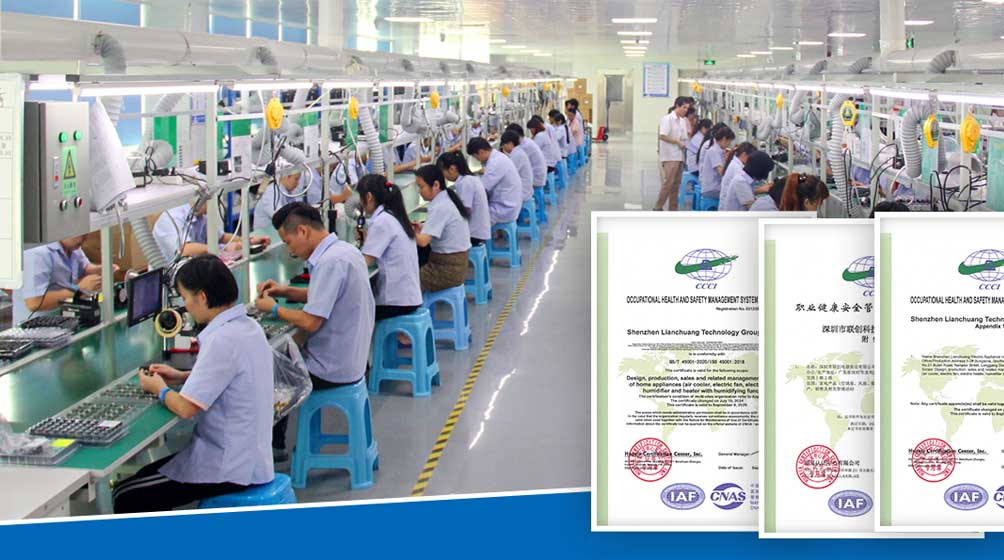Portable Air Circulator fan vs.Traditional fan-What is the difference?

Mafalda

1999 views

December 5, 2024

In daily life, fans have become essential appliances in almost every household, providing relief from the heat during hot summer days. With continuous advancements in technology, the variety of fans on the market has expanded significantly. Among these, portable air circulators and traditional fans are two common options. While both aim to cool you down, they differ greatly in design, functionality, and user experience. This article will compare portable air circulators and traditional fans across several dimensions to help consumers make a more informed choice.
| Table of contents | |
|---|---|
| 1. Differences in Functionality | 2. Differences in Portability |
| 3. Differences in Power and Energy Consumption | 4. Price Differences |
| 5. Different Use Scenarios | 6. Safety Differences |
1. Differences in Functionality
Portable air circulators feature a unique turbine design that allows them to deliver powerful, gentle airflow over a long distance. When used in conjunction with air conditioning, they can quickly balance the room temperature and enhance the efficiency of the air conditioning unit. They also excel in noise control, operating almost silently, especially at lower settings.
In contrast, traditional fans generate airflow through rotating blades, resulting in shorter air distance. This design means traditional fans primarily focus on localized cooling and have limited capability to promote air circulation. The noise level of traditional fans can vary by brand and model, but they are generally louder. For users seeking a quiet environment, a fan with noise-reduction features may be necessary.

2. Differences in Portability
One of the standout features of portable air circulators is their portability. Many models can be powered by USB or batteries, eliminating the need for a fixed power source, making them ideal for outdoor camping, travel, or office use. Their compact size and lightweight design allow users to easily pack them in backpacks or suitcases, providing cooling wherever needed.
In comparison, traditional fans tend to be larger and heavier, which diminishes their portability. Although some come with wheels for easier movement, using them outdoors or in locations without electrical outlets can still be inconvenient.
3. Differences in Power and Energy Consumption
Portable air circulators typically have higher power outputs, around 20W. However, thanks to their brushless DC motors, they consume less energy compared to traditional fans, making them more energy-efficient for prolonged use.
Traditional fans usually have lower power ratings, averaging around 14W. While they consume less power, their energy costs can pile up with long-term use.

4. Price Differences
Portable air circulators generally come at a higher price point due to their enhanced functionality and performance. While high-end models may be more expensive, they offer superior features like air purification and low noise.
Traditional fans are relatively inexpensive, typically ranging from tens to a couple of hundred yuan. The price difference primarily stems from factors such as the brand, features, and materials. Low-end traditional fans may cost just a few dozen yuan, while high-end models can reach several hundred or even over a thousand yuan. Traditional fans offer an economical choice for users with budget constraints, as they have various models available.
5. Different Use Scenarios
Portable air circulators are highly versatile due to their small and lightweight design, making them suitable for outdoor use, such as camping, picnics, or travel. They provide a refreshing experience no matter the scenario. In office settings, you won’t have to worry about tangled power cords or insufficient outlets. Their low-noise operation minimizes disruption during work or rest.
On the other hand, traditional fans are better suited for fixed locations like homes, offices, and shops. Due to their larger size, they are less convenient for outdoor use. In homes, traditional fans can be positioned in living rooms or bedrooms, providing cooling comfort. In offices, they can be placed near workspaces to alleviate heat. In retail environments, traditional fans can be positioned by checkout counters or shelves to ensure customer and employee comfort.

6. Safety Differences
Traditional fans have larger gaps in their front grille, posing safety risks, particularly in homes with children. They can also be less stable, potentially wobbling at higher speeds and affecting the user experience.
Portable air circulators feature a more tightly designed front grille that effectively prevents fingers from being inserted, enhancing safety. Their stability is excellent, and they remain steady even at higher speeds, eliminating any wobbling sensation.
In conclusion, these six points highlight some commonly considered features in daily life. Of course, there are many additional differences, such as product design, target audience, smart features, and product configurations. Portable air circulators and traditional fans exhibit significant differences across various aspects. The choice between the two ultimately depends on individual needs and living environments. If you require whole-room cooling, improved indoor air quality, or seek a higher quality of life, a portable air circulator may be the better option. Conversely, if you have a limited budget and only need to enjoy cool air in a fixed location, a traditional fan would adequately meet your needs.
Share:









